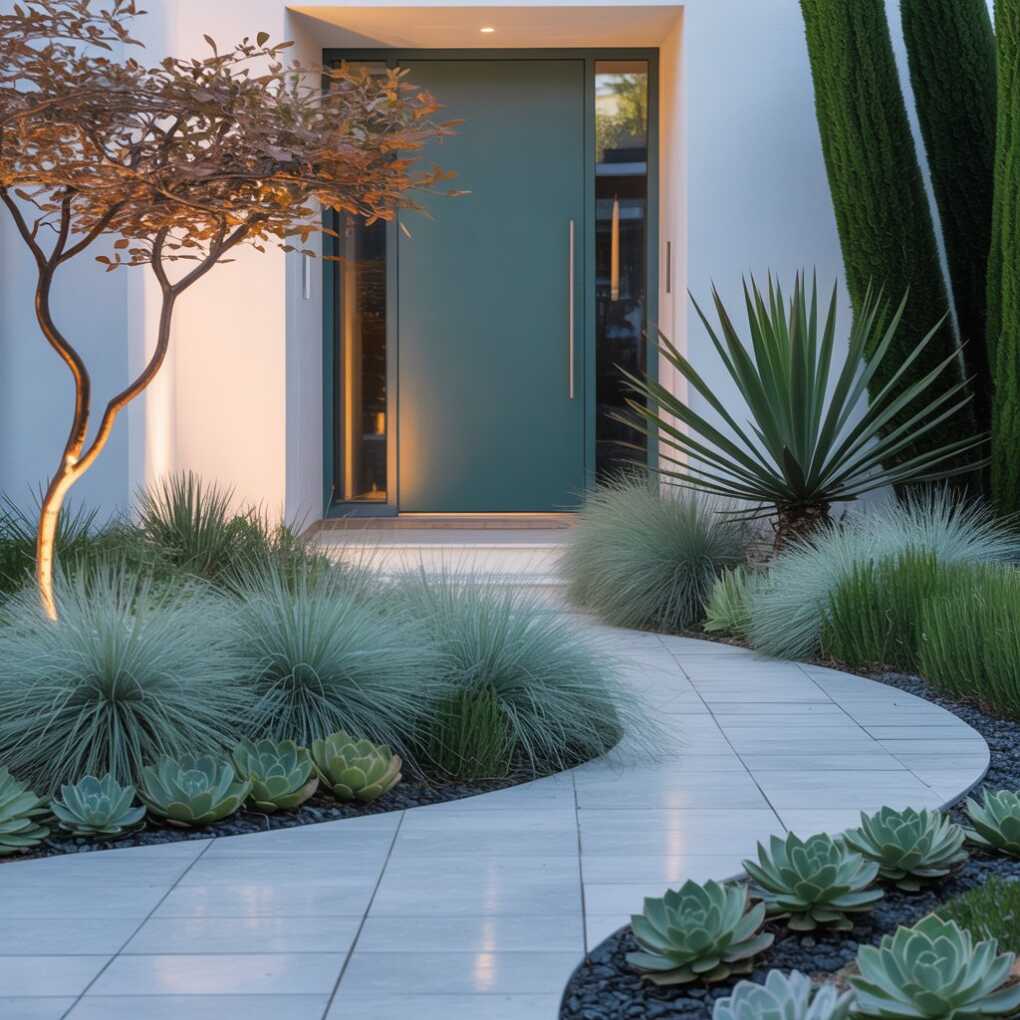Landscaping continues to evolve, shaped by shifting lifestyles, growing environmental concerns, and evolving design trends. As we move deeper into 2025 and beyond, the way we approach outdoor spaces is becoming more intentional, functional, and connected to nature. Homeowners and designers alike seek ideas that blend aesthetics with sustainability and versatility. With the growing desire to create outdoor retreats that serve multiple purposes, landscaping is no longer just about curb appeal but about crafting living environments that improve well-being and promote ecological balance. We will explore landscaping ideas that are set to shape outdoor spaces in the coming years, offering inspiration to transform yards into vibrant, sustainable sanctuaries.

Landscaping Trends Shaping Outdoor Spaces in 2025 and Beyond
Sustainable and Native Planting
The shift toward sustainability is more pronounced than ever in the landscaping industry. Emphasizing native plants and drought-resistant species reduces water consumption and supports local ecosystems. Native plants are naturally adapted to their environment, requiring less maintenance and fewer chemical inputs, such as fertilizers or pesticides. This approach not only preserves biodiversity but also ensures a resilient landscape that can withstand changing climate conditions. Jernigan Landscaping is encouraging clients to incorporate these plants into their gardens to create habitats for pollinators, such as bees and butterflies, which are crucial for maintaining ecological health. This green approach integrates beauty with responsibility, creating landscapes that are both visually appealing and environmentally friendly.
Outdoor Living Spaces That Blend Comfort and Functionality
Outdoor areas are becoming extensions of the home, designed with comfort and practicality in mind. Rather than simple patios or decks, people are investing in multifunctional spaces that can accommodate cooking, dining, relaxation, and entertainment. Features like built-in seating, outdoor kitchens, fire pits, and weather-resistant furniture allow families and friends to enjoy nature without sacrificing convenience. These spaces are often equipped with lighting solutions that create ambiance and extend usability after sunset. Designing with flexibility enables the outdoor environment to accommodate various activities and seasons, making yards feel like year-round retreats.
Smart Landscaping with Technology Integration
The rise of smart home technology is influencing how landscapes are designed and maintained. Automated irrigation systems equipped with sensors help conserve water by adjusting watering schedules according to weather and soil moisture conditions. Lighting can be programmed to enhance safety and highlight features while minimizing energy use. Garden monitoring apps enable users to track the health of their plants and receive reminders for care tasks. This integration of technology streamlines maintenance and optimizes resource use, making it easier for homeowners to keep their outdoor spaces thriving without constant manual effort. Technology also offers new creative possibilities for lighting and water features, enriching the sensory experience of the garden.
Incorporating innovative lighting solutions is another trend set to transform outdoor spaces in 2025 and beyond. One such solution is the use of lanai lights, which offer a versatile and stylish way to illuminate patios and garden areas. These lights not only enhance the aesthetic appeal of outdoor spaces but also provide functional lighting for evening gatherings. As homeowners seek to create more inviting and usable outdoor environments, integrating lanai lights can significantly elevate the ambiance, making them a popular choice for modern landscaping projects. This trend reflects a broader movement towards creating outdoor spaces that are both beautiful and practical, ensuring they can be enjoyed at any time of day.
Sustainable Hardscaping Materials
Hardscaping elements, such as walkways, patios, and retaining walls, are also seeing a push toward sustainability. Materials like permeable pavers allow rainwater to infiltrate the soil, reducing runoff and replenishing groundwater. Recycled and reclaimed materials are gaining popularity for their reduced environmental footprint and unique aesthetic qualities. Using natural stone, sustainably harvested wood, or composite decking made from recycled plastics, you can combine durability with eco-consciousness. Thoughtful material choices contribute to the overall sustainability of the landscape while providing texture and structure that complement plantings.
Edible Gardens and Food Production
Increasing numbers of people are turning to their yards to grow fresh food, reflecting a growing desire for self-sufficiency and healthier eating habits. Incorporating raised beds, vertical gardens, and container planting into the landscape design creates opportunities to grow vegetables, herbs, and fruits even in limited spaces. Combining edible plants with ornamental ones creates visually appealing and productive gardens that support both nutrition and aesthetics. Community gardening trends also encourage sharing knowledge and harvests, connecting neighbors through sustainable food practices. This movement combines practical gardening with a renewed appreciation for the origins of food.
Water Features That Promote Relaxation and Wildlife
Water elements have long been a part of landscaping, but their role is expanding to promote tranquility and support wildlife habitats. Naturalistic ponds, rain gardens, and small waterfalls add soothing sounds and visual interest, while also serving practical purposes such as stormwater management and habitat creation for amphibians and birds. Designing water features with sustainability in mind involves minimizing the use of pumps and chemicals, as well as selecting native aquatic plants. The calming presence of water enhances outdoor spaces as places for rest and reflection, creating a sensory connection to nature that benefits mental health.
Multi-Layered Planting for Depth and Texture
Moving beyond flat beds, multi-layered planting creates dynamic landscapes with depth and texture. Combining trees, shrubs, perennials, and groundcovers in thoughtful arrangements adds complexity and year-round interest. This layering mimics natural ecosystems, fostering resilience and attracting a diverse range of wildlife. Seasonal changes in color, form, and fragrance keep the garden engaging throughout the year. This method also helps with soil stabilization and moisture retention. By creating vertical and horizontal diversity, landscapes feel lush and alive rather than static or artificial.
Conclusion
Landscaping in 2025 and beyond is moving toward designs that are environmentally responsible, highly functional, and deeply personal. Emphasizing sustainability through the use of native plants, eco-friendly materials, and water-wise strategies will become the norm as communities strive to harmonize with the natural world. Outdoor living spaces will continue to evolve as comfortable extensions of indoor life, supported by smart technology and the creative use of space. By incorporating edible gardens, multi-layered plantings, and climate-adaptive features, landscaping will foster resilience and connection. These emerging ideas offer exciting opportunities to transform outdoor spaces into thriving, restorative environments for years to come.
